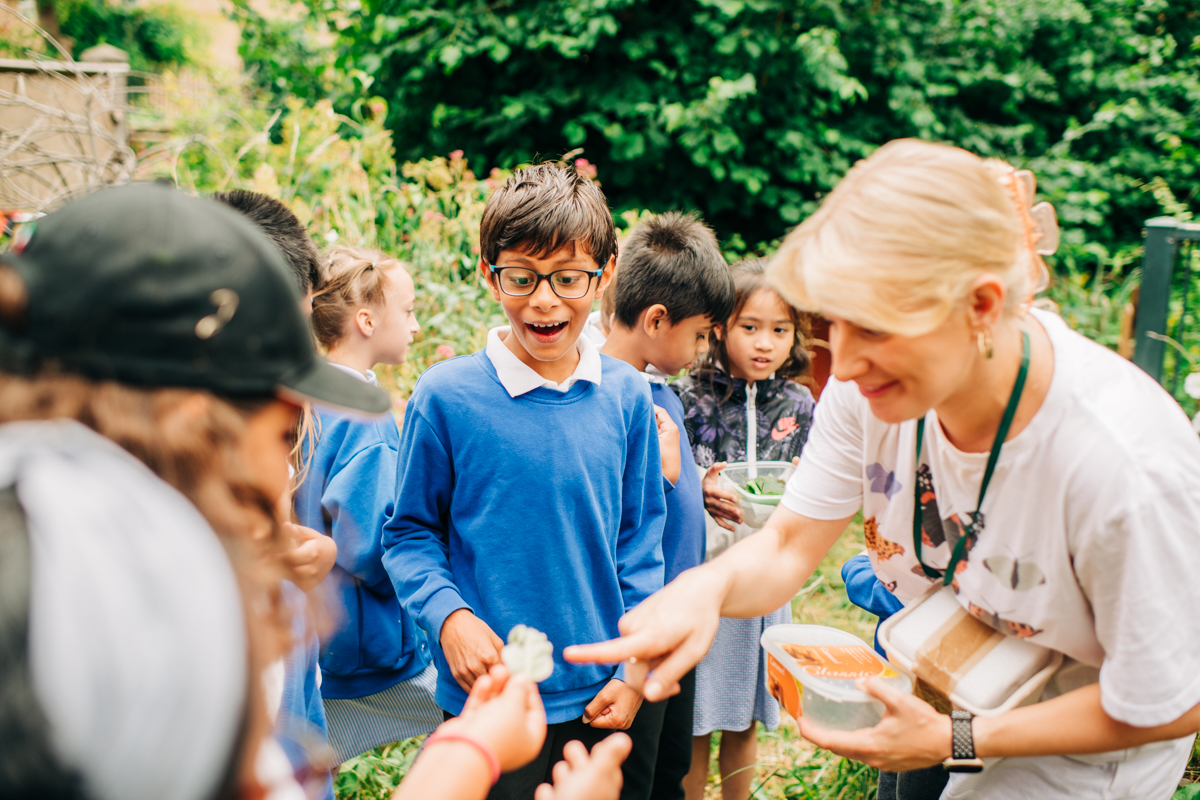8
A FOUR-YEAR project has recorded more than 20,000 butterflies of 28 species in the heart of London.The scheme also recorded more than 1,200 moths of 150 species in parks, allotments, graveyards and community gardens.National charity Butterfly Conservation, which launched the Big City Butterflies initiative in 2021, says the results show that wildlife can thrive in towns and cities with the right management and the support of local communities.Butterfly Conservation Project Officer Steve Bolton said: "We worked with fantastic community groups, councils and council officers across Inner London who are creating and maintaining amazing spaces for nature, and it’s in those spaces where we’ve found the most wildlife.”One such site where the project recorded big success was Avery Hill Park in Greenwich.Steve said: "We partnered with a very active and enthusiastic group, the Friends of Avery Hill Park, and two years ago we paid to create a big new wildflower meadow with them. They also pushed the council to change the grass mowing regime."In 2023, we had 16 transect walks at the park that counted 1,144 butterflies of 19 species; the following year there were 19 walks that counted 2,117 butterflies of 20 species: the number of walks went up 20 per cent but the number of butterflies we counted went up 85 per cent - and that was in a bad year for butterflies. It's not a scientific test, but we don't have any doubt that the work the Friends did with the council's help has boosted numbers there in ways that other areas could replicate."Over four years, Butterfly Conservation’s project helped to create or improve 72 sites for butterflies and moths across London, including 27,000m2 of wildflower meadow.The project also planted 88 trees, 511 shrubs, and 2,757 flower pots and flower plugs, and the team helped councils and community groups write 30 management plans.Steve said one of the highlights of the project was working with the Wild Clapham community group on Clapham Common: he helped them create special butterfly banks and a 1,500m2 meadow area, using Butterfly Conservation funding in addition to £10,000 they raised themselves. When that work proved successful, the group went on to create another two meadow areas themselves, drawing on the knowledge and experience they had gained working with Butterfly Conservation.Steve said: "That in a nutshell was one of the main aims of the whole project - to give people the skills and information so they can go on to do great things themselves."The fact we had funding for four years was absolutely crucial because we needed to build relationships with these groups and local councils and you can't do that in just one or two years."Wild Clapham member Gareth James commented: "I think a lot of people feel quite helpless, and a lot of young people have ecoanxiety at the moment, but there are things that you can do and I think even just doing small things makes you feel a bit better."In East London the project helped Hackney Buzzlines and Hackney Council create a 4km pollinator corridor linking four parks through three social housing estates.Newham Council worked with the Big City Butterflies team to create the Greenway Pollinator Trail, a £50,000 ribbon of new wildlife habitat along a 7km cycle route.Butterfly Conservation’s Project Officer Emma Bickford has been in charge of engaging the wider community.Over the past four years, the project has run 96 school workshops for more than 1,950 children, teaching them the roles of moths and butterflies in the ecosystem and the things they can do to help them in school grounds and local green spaces. The project team also attended more than 110 events, engaged thousands of people and worked with community partners on a range of butterfly-inspired artistic projects.Emma said: “Butterflies hold special meaning for so many people. They are symbolic of hope, change and new beginnings. It has been wonderful to explore that creatively through performance, dance, poetry and sculpture as part of the project.”The engagement team worked with Roots and Shoots, an educational and environmental charity with a one-acre site in South London, on a horticultural therapy programme with The Grounding Project to help refugees and asylum seekers recovering from trauma by creating a permanent sculpture in the gardens.The Kaleidoscope of Butterflies sculpture symbolises difficult journeys and celebrates compassion. Roots and Shoots director Linda Phillips MBE AoH said: "This innovative project with Butterfly Conservation and the Grounding Project illustrates the international significance of butterflies to people from all over the world, showing that the impact of nature has meaning, and is healing, for all."Big City Butterflies was initially made possible by a £433,600 grant from the National Lottery Heritage Fund, and also received more than £60,000 from other generous individuals and organisations.Stuart McLeod, London and South director at The National Lottery Heritage Fund, said: “We are lucky to have a range of interesting and important species on our doorsteps, even in our cities. National Lottery players have highlighted natural heritage as especially important to them, which is why we are proud to have supported Butterfly Conservation with The Big City Butterfly project, highlighting the value of nature to all our daily lives.”Big City Butterflies in numbers:• 68 recording and monitoring workshops training 742 people• 21,389 butterflies recorded of 22 species• 1,282 moths recorded of over 150 species• 77 habitat sites created or improved• 27,000m2 of meadow established• 511 shrubs and 88 trees planted• 2,757 flower pots and plugs planted• 21 habitat management workshops run with 232 attendees• 96 school workshops attended by 1,950 children• 91 community events• 4 Big Butterfly Count eventsIn the past few months Emma has been working to ensure the legacy of the project by signing up partners across London who will continue to run similar activities.The project also ran 68 workshops training 742 people to monitor and record butterflies and moths by doing transect walks, surveys and moth traps which they can continue to do for years to come, helping Butterfly Conservation continue to build a picture of how species are faring in the capital – and where.One volunteer who learnt to record as part of the project said: "It has opened my eyes to a whole new love for butterflies. I spend lots of time photographing them, learning to identify and recording on iRecord. It's a new passion."The project team have put more information and resources for groups to use on the webpage: butterfly-conservation.org/BCBButterfly Conservation also has four London branches which are always looking for new members and volunteers. Find your local branch at butterfly-conservation.org/in-your-area
A FOUR-YEAR project has recorded more than 20,000 butterflies of 28 species in the heart of London.
The scheme also recorded more than 1,200 moths of 150 species in parks, allotments, graveyards and community gardens.
National charity Butterfly Conservation, which launched the Big City Butterflies initiative in 2021, says the results show that wildlife can thrive in towns and cities with the right management and the support of local communities.



Not deliberate on my part. I think that it might be a seasonal thing to some extent, with a good many projects producing annual reports around now - and the big successes are the ones that get publicised the most ,and other projects being announced/getting underway.
I wouldn’t be surprised that we will get another round of sewage spills and other pollution news as (if) we get heavier rain in the coming couple of months for example - another seasonal effect.
You’re probably right. All the more important to enjoy the good news whilst it lasts, I guess!